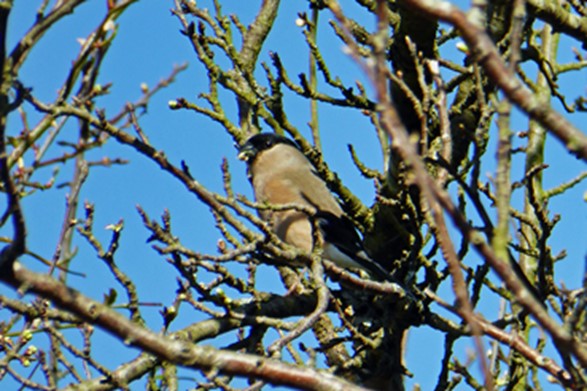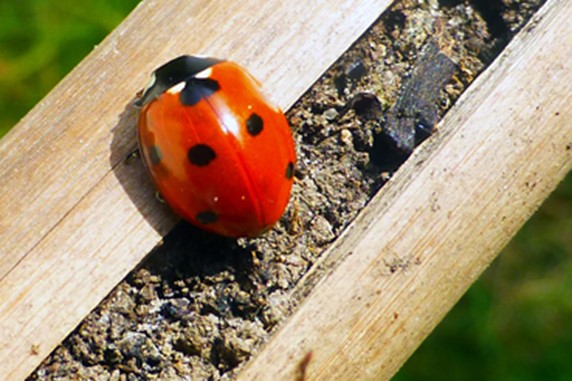March 2014.
A natural history of the Hedgerows and Gardens in Clewers Lane, Waltham Chase.
Words and pictures by Gordon Larcombe
Sunshine and showers were the order of the day for March and the air was filled with the sounds of birdsong and the buzzing of early insects. On almost every day, the greater spotted woodpecker male could be heard drumming out his territorial message on the local oak trees. Even though it is brightly coloured, it is far easier to detect this bird by ear than eye, and it is not easy to photograph as it is rarely still, always darting about:

GREATER SPOTTED WOODPECKER, CLEWERS LANE
One dull morning, a pair of grey herons flew low across the lane in a Northerly direction. Their calls rather surprised me – it was rather like a loud rook. I did not have time to snap them both in one shot and so here is a picture of just one:

GREY HERON, CLEWERS LANE
Many of the birds have been nesting over the past month and I watched a magpie twisting and tearing small green twigs from the hedgerow before carrying them off to its nest site. More traditionally, the blackbirds and house sparrows have been collecting old grasses, string, horsehair, moss and leaves to use as their nest materials:
.

MALE HOUSE SPARROW WITH NEST MATERIAL, CLEWERS LANE

FEMALE BLACKBIRD WITH NEST MATERIAL, CLEWERS LANE
The song thrush now sings only occasionally; they are very early breeders and are probably busy feeding their young. However the male chaffinches and greenfinches are in fine voice and on a suitably sunny day they can be seen perched at the top of a tree, in their best breeding feathers, singing away:

MALE GREENFINCH, CLEWERS LANE
The males of most finches are very strikingly coloured indeed, but the female colour scheme is usually much more muted, presumably to help camouflage when on the nest. This contrast is particularly noticeable in the bullfinch, where the male has a highly visible, brilliant ‘day glow’ pink chest (see picture in February diary), but the female is greyish brown:

FEMALE BULLFINCH, CLEWERS LANE
Insect life was stimulated by the warm sunshine in early March. Large numbers of the familiar seven-spot ladybirds could be seen as they emerged from their winter hibernation:

SEVEN-SPOT LADYBIRD, CLEWERS LANE
Green shield bugs and squash bugs were also about, catching the warmth of the sun:

GREEN SHIELD BUG, CLEWERS LANE
The squash bug, similar in shape and size to the shield bug, is a close relative:

SQUASH BUG, CLEWERS LANE
The plant life on the verges of Clewers Lane has also begun to emerge from winter. The dog violets have bloomed:

DOG VIOLET, CLEWERS LANE.
The willow buds are cracking open:

WILLOW BUDS, CLEWERS LANE
And, on a sunny day, the lesser celandines carpet the verge with yellow:

LESSER CELANDINES, CLEWERS LANE


